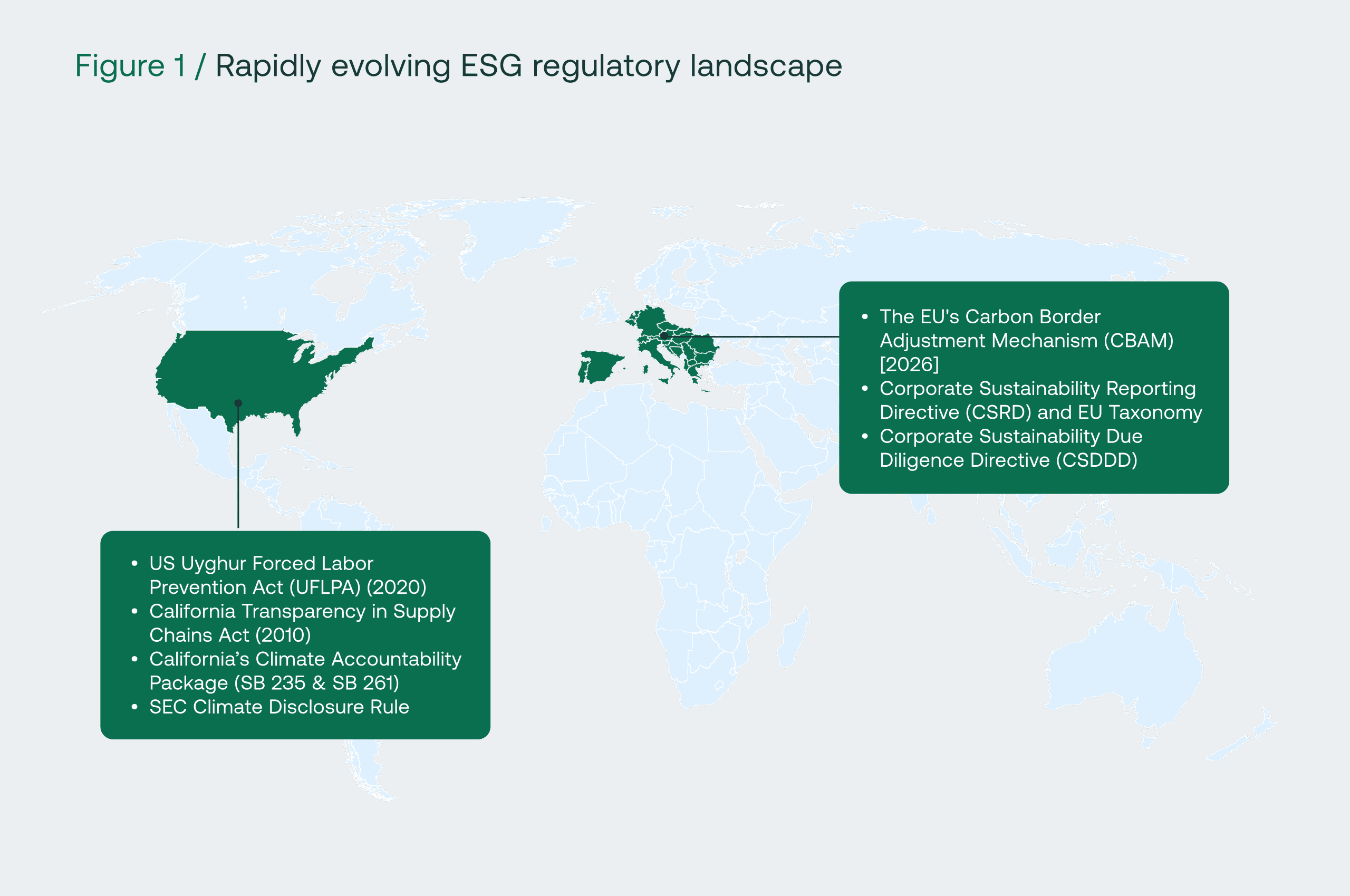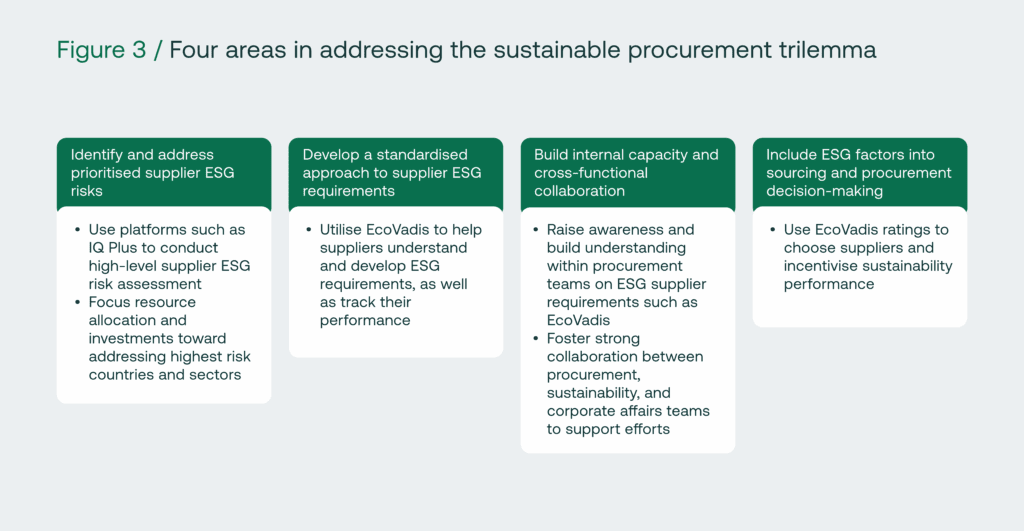 ESG business case: Why sustainability drives profit, resilience, and growth
ESG business case: Why sustainability drives profit, resilience, and growth
“Sustainability isn’t a sideline or a PR exercise. It’s a core business imperative, tied directly to reputation, risk, and the bottom line.”
The manufacturing industry in 2025 is undergoing a rapid transformation, shaped by technological innovation, mounting climate pressures, and an increasingly complex regulatory environment (1). As companies grapple with rising raw material costs, supply chain disruptions, and the urgent need to reduce emissions, sustainability has moved from a peripheral concern to a central business imperative.
Manufacturers are now expected to not only deliver quality products efficiently but also to demonstrate their commitment to environmental and social responsibility. This shift is being driven by a combination of stakeholder expectations-customers, investors, and employees alike-and a wave of new regulations that demand greater transparency and accountability in everything from carbon emissions to supply chain practices. At the same time, digital transformation is unlocking new opportunities. The adoption of AI, advanced analytics, and automation is enabling manufacturers to optimise resource use, cut waste, and integrate circular economy principles into their operations. Those who embrace these changes are finding that sustainable practices can go hand-in-hand with increased agility, operational efficiency, and long-term profitability.
In this landscape, building a resilient sustainability strategy is no longer optional. It is the foundation for future growth, risk management, and market leadership. The following article explores how forward-thinking manufacturers are navigating these challenges and turning sustainability from a compliance exercise into a source of competitive advantage.
The regulatory storm: Why Manufacturers must act now

Imagine a global chessboard where every move-whether it’s a new law in California, a reporting directive from Brussels, or a tariff in Washington-reshapes the rules of manufacturing. This is the reality facing today’s industry leaders. In the United States, regulations like the Uyghur Forced Labor Prevention Act and the SEC Climate Disclosure Rule are raising the bar for transparency and accountability. Meanwhile, the European Union’s Carbon Border Adjustment Mechanism and Corporate Sustainability Reporting Directive are redefining what it means to operate internationally. Read our newest CSRD guide about tackling ESG reporting in the uncertain times to find out more.
But it’s not just governments setting the pace. Consumers are voting with their wallets-three out of four say they’ll stop buying from companies that mistreat workers or the environment. Employees, too, are seeking purpose, with 86% preferring to work for companies that prioritise ESG. Investors are scrutinising sustainability risks as never before, and the financial data is clear: companies with strong ESG ratings are more profitable, with a 92% correlation between medium-to-high ESG scores and profitability (2).
For manufacturers, the message is unmistakable. Sustainability isn’t a sideline or a PR exercise. It’s a core business imperative, tied directly to reputation, risk, and the bottom line.
Four pillars of resilient Manufacturing sustainability
So, how can manufacturers transform these challenges into opportunities? The webinar distilled the answer into four strategic pillars, each vital for building resilience in a shifting landscape.
1. Embracing a risk-based approach

The first step is to see sustainability not as a checklist, but as a dynamic risk management process. Leading manufacturers are weaving ESG frameworks into their enterprise risk management frameworks, guided by international standards like the OECD Due Diligence Guidance. This means mapping out not just where the company is exposed-be it labour practices in the supply chain or emissions from operations-but also where it can make the greatest positive impact.
Double materiality assessments, now required under EU rules for some organisations, force companies to look both inward (how sustainability issues affect the business) and outward (how the business affects society and the environment). By identifying the most material risks and opportunities, manufacturers can prioritise resources, anticipate regulatory changes, and build strategies that are both compliant and competitive.
2. Elevating ESG reporting services and disclosure
Transparency is the new currency of trust. Nearly every major manufacturer now publishes some form of ESG report, and the majority align with established frameworks such as the Global Reporting Initiative (GRI), Task Force on Climate-Related Financial Disclosures (TCFD), and Sustainability Accounting Standards Board (SASB). These frameworks don’t just satisfy regulators-they help companies communicate clearly with investors, customers, and employees about their progress and challenges.
But reporting is evolving. It’s no longer enough to simply disclose data; companies must demonstrate how ESG considerations are integrated into decision-making and how they’re driving real-world change. Manufacturers that excel in reporting are those that treat it as a management tool, not just a compliance requirement.
3. Decarbonisation: Turning ambition into action
Manufacturing is responsible for nearly a third of all U.S. greenhouse gas emissions, making decarbonisation both a moral imperative and a business opportunity. Yet, the sector is still catching up: two-thirds of manufacturers lack formal decarbonisation targets, and only a fraction have committed to net-zero by 2050 (3).
The stakes are rising. Investors are demanding climate action, and new incentives-such as tax credits under the Inflation Reduction Act-make it more attractive than ever to invest in clean technology. At the same time, mechanisms like the EU’s Carbon Border Adjustment Mechanism threaten to penalise exporters who lag behind.
Manufacturers that act decisively-setting science-based targets, investing in energy efficiency, and collaborating across the value chain will not only reduce risks but also unlock new markets and sources of value. See how we can help with your organisation’s journey towards net zero & decarbonisation.
4. Sustainable procurement: The supply chain revolution
Perhaps the most profound shift is happening in the supply chain. More than 80% of a manufacturer’s sustainability footprint lies outside its direct operations, embedded in the goods and services it buys. The 2024 EcoVadis Sustainable Procurement Barometer found that 71% of organisations now see sustainable procurement as critical to achieving their goals (4).
Yet, many manufacturers are still struggling to turn ambition into action. Common gaps include a lack of supplier engagement on ESG issues, weak contractual requirements, and insufficient risk analysis. The leaders, by contrast, are raising the bar-requiring suppliers to complete self-assessment questionnaires, implement corrective action plans, participate in audits, and undergo ESG training.
Sustainable procurement isn’t just about compliance. It’s about building a resilient, transparent, and ethical supply chain that can withstand shocks and deliver long-term value.
Watch our experts from Nexio Projects & EcoVadis talk about the topic further in our on-demand video:

The sustainable procurement trilemma: Navigating trade-offs
Of course, the path to sustainability leadership is rarely straightforward. Manufacturers today face a “trilemma” as they navigate rising tariffs, shifting supply chains, and the need to maintain ESG standards. Should they absorb higher costs to maintain responsible suppliers, or seek cheaper alternatives that may pose greater risks? Can they afford to invest in compliance when margins are tight? And how do they vet new suppliers quickly without compromising on standards?
There are no easy answers, but the most forward-thinking companies are finding ways to balance these competing demands. They’re using advanced platforms to assess supplier risks, investing in internal capacity-building, standardising ESG requirements across the supply base, and integrating sustainability kpis into procurement decisions. In doing so, they’re not just avoiding pitfalls-they’re building competitive advantage.

Turning compliance into opportunity
The manufacturing sector is entering a new era-one defined by transparency, accountability, and innovation. The companies that will lead are those that see creating a sustainability planning not as a burden, but as a catalyst for growth and resilience.
By embracing risk-based strategies, investing in robust reporting, committing to decarbonisation, and transforming procurement, manufacturers can turn regulatory challenges into opportunities for differentiation. They can attract top talent, win customer loyalty, and secure the trust of investors. Most importantly, they can help shape a more sustainable future for industry and society alike.
Frequently asked questions
What makes sustainability strategies unique for manufacturing companies?
Manufacturing companies must manage high emissions, complex supply chains, and regulatory shifts, so their strategies emphasise process efficiency, circular design, and compliance-driven reporting frameworks.
How should manufacturers adapt their sustainability strategies to shifting regulations?
Manufacturers should monitor regulation changes, conduct compliance gap assessments, integrate sustainability targets into production planning, and embed adaptable governance systems that can respond quickly to evolving standards.
Which metrics should manufacturing firms prioritise in their sustainability strategy?
Key metrics include energy and fossil-fuel use per unit output, waste generation rates, recycled content percentage, GHG emissions per product, and incident rates related to environmental or social performance.
What are common challenges in implementing sustainability strategies in manufacturing?
Challenges include outdated legacy systems, fragmented data across facilities, resistance to change in operations, and aligning sustainability objectives with production targets and cost controls.
How can manufacturers build long-term resilience through sustainability strategy?
They can incorporate risk-adaptation plans, diversify supply sourcing, design circular product systems, invest in digital monitoring, and align sustainability with business value to withstand regulatory and market shifts.
How can we support you?
For manufacturers ready to take the next step, resources abound. Nexio Projects and EcoVadis offer expert guidance, from supplier engagement programs to net-zero strategy and ESG reporting. The journey may be complex, but the rewards-for those who lead-are profound.
Nexio Projects is a niche sustainability consulting firm supporting businesses in navigating ESG reporting, regulatory compliance, and long-term climate strategies. Recognised by Verdantix as one of the top 10 boutique ESG consultancies globally, our team has delivered over 1,000 projects for clients in more than 20 countries. Since 2018, we’ve worked closely with EcoVadis as a strategic partner, helping companies optimise their scores and better understand the framework. With deep sector knowledge across industries including manufacturing logistics, chemicals, and consumer goods, we offer practical, tailored support to help organisations move confidently toward their sustainability goals.
To be up-to date with the latest industry-specific news and ESG developments, subscribe to our newsletter.
Additionally, you can download the latest EcoVadis guide for manufacturers below.
For more insights and tailored support on your sustainability journey, contact Nexio Projects.
References:
- IFS, 2024. Manufacturing trends 2025: Navigating challenges with AI, sustainability and innovation. [online] IFS Blog. Available at: https://blog.ifs.com/2024/12/manufacturing-trends-2025-navigating-challenges-with-ai-sustainability-and-innovation/ [Accessed 23 Jun. 2025].
- ESG News (2024) CSE study highlights 92% correlation between sustainability, ESG performance and most profitable companies in US & Canada. [online] Available at: https://esgnews.com/cse-study-highlights-92-correlation-between-sustainability-esg-performance-and-most-profitable-companies-in-us-canada/ [Accessed 23 Jun. 2025].
- EPA (n.d.) Industry sector emissions. [online] Available at: https://www.epa.gov/ghgemissions/industry-sector-emissions [Accessed 23 Jun. 2025].
- EcoVadis (2024) Unlocking the power of sustainable procurement: Insights from the 2024 Barometer. [online] Available at: https://resources.ecovadis.com/blog/unlocking-the-power-of-sustainable-procurement-insights-from-the-2024-barometer [Accessed 23 Jun. 2025].











